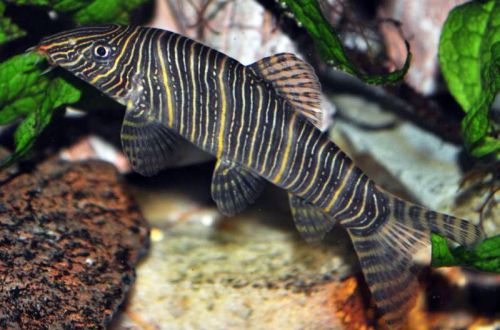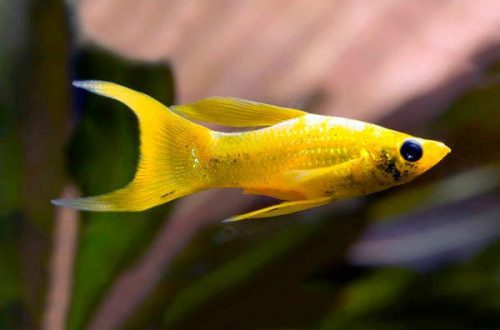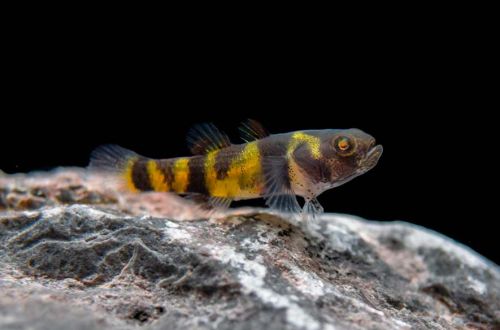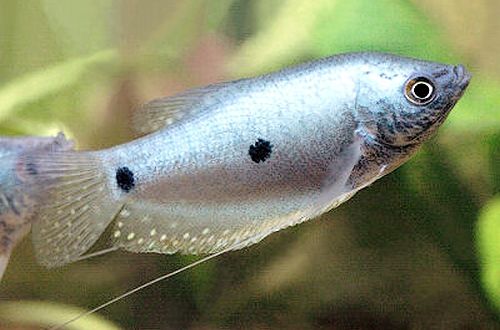
Bocilia-zebra
Botia Striata or Zebra Bocilia, also known as Striped Bocilia, scientific name Botia striata, belongs to the Cobitidae family. A fairly simple and unpretentious species in content, when kept in suitable conditions. It is considered conditionally peaceful as a fish, the choice of neighbors should be taken carefully. Botsia is compatible with many other species, with the exception of very small fish. In addition, it is prone to damage to the long fins and tails for which some ornamental species are famous.

Contents
Habitat
It originates from South India, is found in the river systems flowing through the states of Karnataka, Maharashtra and Andhra Pradesh, and flowing into the Bay of Bengal. It lives near the coast at a depth of up to 1.5 meters among numerous snags and aquatic vegetation.
Brief information:
- The volume of the aquarium – from 100 liters.
- Temperature – 21-26°C
- Value pH — 6.0–7.5
- Water hardness – soft (1-10 dGH)
- Substrate type – sandy
- Lighting – subdued
- Brackish water – no
- Water movement – moderate
- The size of the fish is up to 9 cm.
- Nutrition – any drowning
- Temperament – conditionally peaceful
- Content in a group of at least 5 individuals
Description
Adult individuals reach a length of up to 8–9 cm. Sexual dimorphism is weakly expressed. Females are somewhat larger than males, which is especially noticeable during the spawning period. However, the latter rarely occurs in aquariums. The coloration is dark, the body pattern consists of alternating diagonal stripes of gray / brown and pale yellow. At the same time, the pattern ornament can have not only stripes, but also circles, spots. As a rule, these are hybrid samples.
Food
Refers to carnivorous species. In the wild, it feeds on aquatic insects and their larvae, small crustaceans and other zooplankton that live at the bottom of rivers. In the aquarium, sinking foods should be fed, for example, dry flakes, pellets, frozen bloodworms, brine shrimp, daphnia. You can also use pieces of earthworms, mollusks. Important – herbal supplements must be present in the diet, otherwise the fish will damage small-leaved plants.
Maintenance and care, arrangement of the aquarium
The optimal size of the aquarium for a group of 5 fish starts from 100 liters. The design uses a sandy substrate mixed with pebbles and large boulders. A few snags in the form of tree roots and branches, or any other artificial shelter. Groups of shade-loving plants. The lighting level is subdued. The addition of Indian almond leaves will give the water a brownish tint that is characteristic of its natural habitat.
When keeping, it should be borne in mind that Bocilia Zebra prefers a moderate current and needs clean and oxygen-rich water. To do this, in addition to a productive filtration system, it is necessary to update part of the water (30–35% of the volume) weekly with fresh water and regularly clean the aquarium from organic waste.
Behavior and Compatibility
They prefer to stay in a flock of at least 10 individuals. It is allowed to purchase 5 Striped Bocilia. When kept alone, they can show aggression towards other inhabitants of the aquarium. Very small fish and species with long fins should be avoided. They can be compatible with other chars and catfish, given enough space, as well as fish of similar size living in the water column or near the surface.
Breeding / breeding
Successful breeding of Bocilia in the home aquarium is a rarity. On a commercial basis in fish farms, they are bred using hormonal injections.
Fish diseases
Health problems arise only in case of injuries or when kept in unsuitable conditions, which depresses the immune system and, as a result, provokes the occurrence of any disease. In the event of the appearance of the first symptoms, first of all, it is necessary to check the water for the excess of certain indicators or the presence of dangerous concentrations of toxic substances (nitrites, nitrates, ammonium, etc.). If deviations are found, bring all values back to normal and only then proceed with treatment. Read more about symptoms and treatments in the Aquarium Fish Diseases section.





